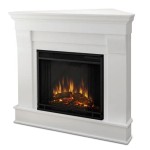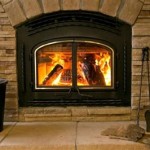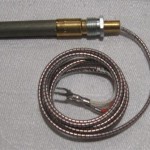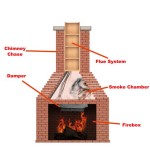Use only English.
River Stone Fireplace: A Natural Hearth for the Modern Home
The river stone fireplace represents a harmonious blend of rustic charm and contemporary design, offering a unique and aesthetically pleasing addition to any home. This type of fireplace utilizes naturally sourced river stones, each possessing unique variations in color, texture, and shape, to create a visually captivating focal point. The appeal lies not only in its visual impact but also in the sense of connection to nature that it evokes, bringing a touch of the outdoors into the interior living space.
River stone fireplaces are not a recent trend; they have been utilized for centuries in various cultures. Early applications often involved crude construction methods, using readily available stones to build basic fire pits and rudimentary fireplaces. However, advancements in construction techniques and design sensibilities have elevated the river stone fireplace to a sophisticated and artistic element in modern architecture. Today, these fireplaces can be found in a wide range of styles, from minimalist and contemporary to traditional and rustic, each reflecting the unique preferences and aesthetic vision of the homeowner.
The construction of a river stone fireplace typically involves a combination of skilled craftsmanship and careful material selection. The process begins with the selection of appropriate river stones, considering factors such as size, color, texture, and overall shape. These stones are sourced from riverbeds or quarries that specialize in natural stone products. Once the stones are selected, they are carefully arranged and mortared together to create the desired fireplace surround. The design often incorporates a firebox, chimney, and potentially other features such as a hearth or mantel.
The versatility of the river stone fireplace is a significant factor in its enduring popularity. It can be adapted to suit various architectural styles and interior designs, making it a suitable choice for a wide range of homes. Whether the goal is to create a cozy and inviting atmosphere in a rustic cabin or to add a touch of natural elegance to a modern urban dwelling, the river stone fireplace can be tailored to meet specific design requirements.
Aesthetic Appeal and Design Versatility
The most compelling aspect of a river stone fireplace is undoubtedly its aesthetic appeal. The natural variations in the stones create a visually dynamic surface, with subtle shifts in color and texture that are impossible to replicate with manufactured materials. Each stone tells its own story, shaped by the forces of nature over centuries. This inherent uniqueness adds character and depth to the fireplace, making it a conversation piece and a source of visual interest.
The design versatility of river stone fireplaces is another key advantage. They can be incorporated into a variety of architectural styles, from traditional to contemporary. In rustic settings, the river stone fireplace complements natural wood finishes, exposed beams, and other earthy elements, creating a cohesive and harmonious design. In modern homes, the contrasting textures and colors of the stones can provide a striking visual counterpoint to sleek lines, minimalist furniture, and other contemporary design elements. The stones can be arranged in various patterns, from random and organic to structured and symmetrical, allowing for further customization of the fireplace's appearance.
Furthermore, the shape and size of the river stones can be varied to achieve different aesthetic effects. Larger, more angular stones can create a bolder, more dramatic look, while smaller, smoother stones can evoke a more subtle and refined aesthetic. The color palette of the stones can also be carefully selected to complement the surrounding décor, creating a cohesive and visually appealing design. The flexibility in design ensures that the fireplace integrates seamlessly into the overall aesthetic of the room, enhancing its beauty and adding value to the home.
Beyond the visual appeal, the texture of the river stones adds another dimension to the fireplace's aesthetic. The smooth, worn surfaces of the stones invite touch, creating a tactile experience that enhances the overall ambiance of the room. The combination of visual and tactile elements makes the river stone fireplace a truly engaging and sensory experience.
Construction and Material Considerations
The construction of a river stone fireplace requires careful planning and skilled craftsmanship. The process begins with the preparation of the foundation, which must be structurally sound and capable of supporting the weight of the stones and mortar. The foundation is typically constructed of concrete or masonry, and it must be properly insulated to prevent heat loss and potential fire hazards. The firebox, which houses the fire, must be constructed of fire-resistant materials, such as firebrick or cast iron. The chimney, which vents the smoke and gases from the fire, must be properly designed and constructed to ensure adequate draft and prevent backdrafting. The choice of mortar is crucial for the longevity and structural integrity of the fireplace. A high-quality mortar designed for stone masonry should be used to ensure a strong and durable bond between the stones. The mortar should also be resistant to heat and moisture to prevent cracking and degradation over time.
The selection of river stones is another critical factor in the construction process. The stones should be of consistent quality and free from cracks, chips, or other defects that could compromise their structural integrity. The size, shape, and color of the stones should be carefully considered to achieve the desired aesthetic effect. It is also important to ensure that the stones are properly cleaned and prepared before installation. This typically involves removing any dirt, debris, or loose particles that could interfere with the adhesion of the mortar.
Environmental considerations also play a role in the selection of river stones. Sustainable sourcing practices should be prioritized to minimize the environmental impact of the construction process. This may involve selecting stones from quarries that adhere to responsible mining practices or sourcing stones from local riverbeds where removal is permitted and environmentally sustainable. The ethical and environmental implications of material sourcing are increasingly important considerations for homeowners and builders alike.
The professional installation of a river stone fireplace is highly recommended. A qualified mason or contractor will have the experience and expertise to ensure that the fireplace is constructed properly, safely, and in compliance with all applicable building codes. Proper installation is essential for the longevity and safety of the fireplace, and it can also help to prevent costly repairs or replacements in the future.
Benefits and Advantages and Maintenance
Beyond its aesthetic appeal, the river stone fireplace offers several practical benefits and advantages. One of the primary benefits is its ability to provide supplemental heat to the home. A wood-burning fireplace can be an efficient and cost-effective way to heat a room, especially during cold winter months. The radiant heat emitted by the stones can warm the surrounding area, creating a cozy and comfortable atmosphere. Furthermore, a fireplace can serve as a backup heat source in the event of a power outage, providing essential warmth and comfort during emergencies.
Another advantage of the river stone fireplace is its durability and longevity. The stones are naturally resistant to weathering and erosion, and they can withstand the high temperatures of a fire without cracking or degrading. With proper maintenance, a river stone fireplace can last for generations, becoming a cherished family heirloom. The durable nature of the materials translates into long-term value for the homeowner.
The river stone fireplace also offers a unique opportunity to connect with nature. The natural textures and colors of the stones evoke a sense of the outdoors, creating a calming and relaxing atmosphere in the home. The crackling of the fire and the gentle warmth of the stones can provide a welcome respite from the stresses of modern life. The fireplace becomes a focal point for gathering with family and friends, fostering a sense of community and connection.
Maintenance of a river stone fireplace is relatively straightforward. Regular cleaning is essential to remove soot and ash from the firebox and chimney. A professional chimney sweep should be hired annually to inspect and clean the chimney to prevent the buildup of creosote, a flammable substance that can cause chimney fires. The stones can be cleaned with a mild detergent and water to remove any surface dirt or stains. It is important to avoid using harsh chemicals or abrasive cleaners, as these can damage the stones. With proper care and maintenance, a river stone fireplace can provide years of enjoyment and enhance the beauty and value of the home.
The river stone fireplace is more than just a source of heat; it is a statement of style, a connection to nature, and a testament to the enduring appeal of natural materials. Its unique aesthetic, design versatility, and practical benefits make it a valuable addition to any home.

Designing Luxurious Stone Fireplaces With A Treasure River Rock Selexstone Selex

Real Stone Veneer River Rounds Stonewood S

Standout River Rock Fireplaces Cottage Cuties

How To German Smear A Dated River Rock Fireplace Krista Gilbert

60 River Rock Stone Molds Make 1000s Fireplace Wall Veneer Free

River Stone Fireplaces Rock Fireplace Design

Fireplaces Eldorado Stone

River Stone Fireplace Detail For Rock Home Ideas Fireplaces Design

Multicolor Eco Cobble Stone Decorative With River Rock Veneer From China Stonecontact Com

River Stone Fireplace Photos Ideas Houzz
Related Posts








